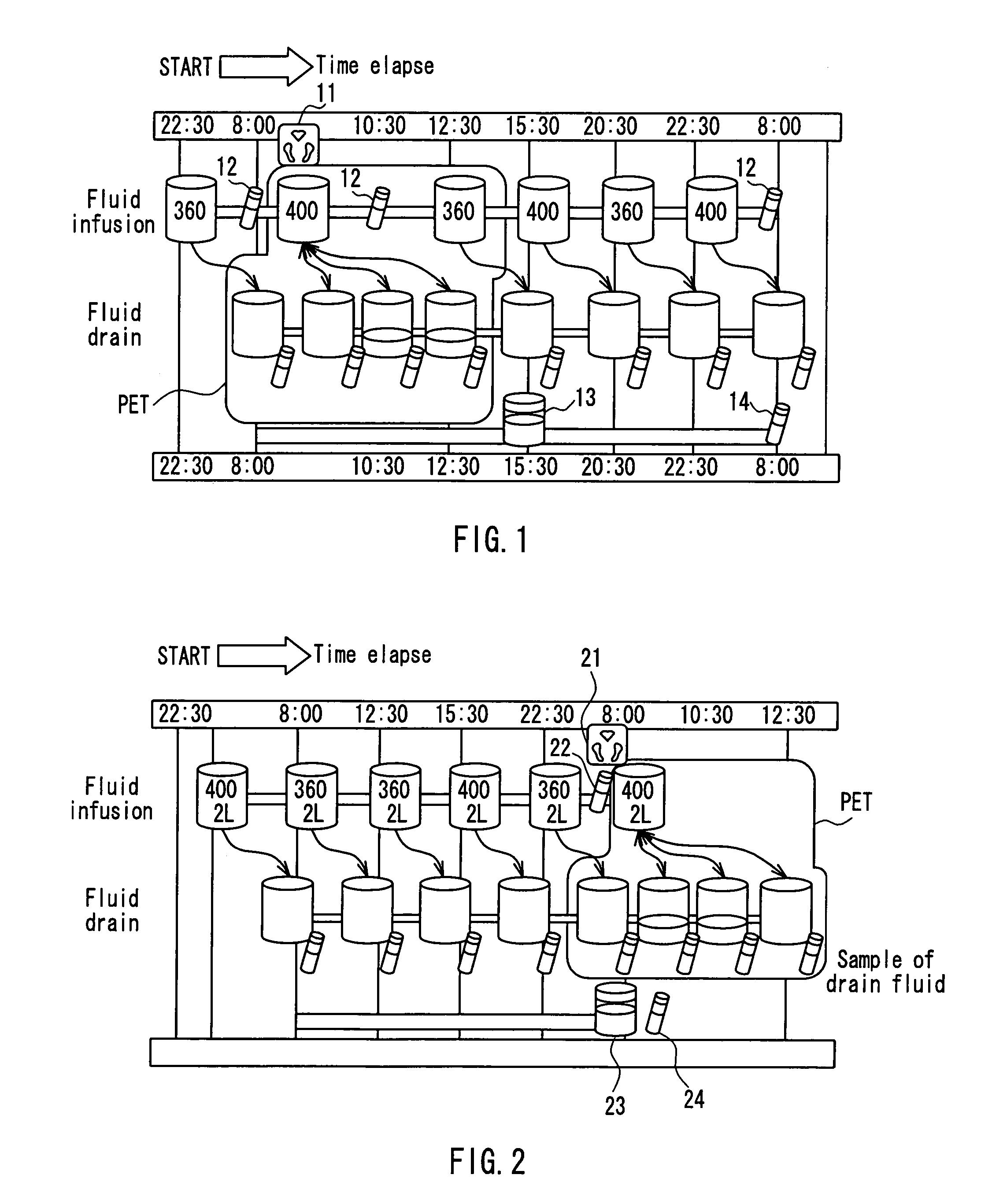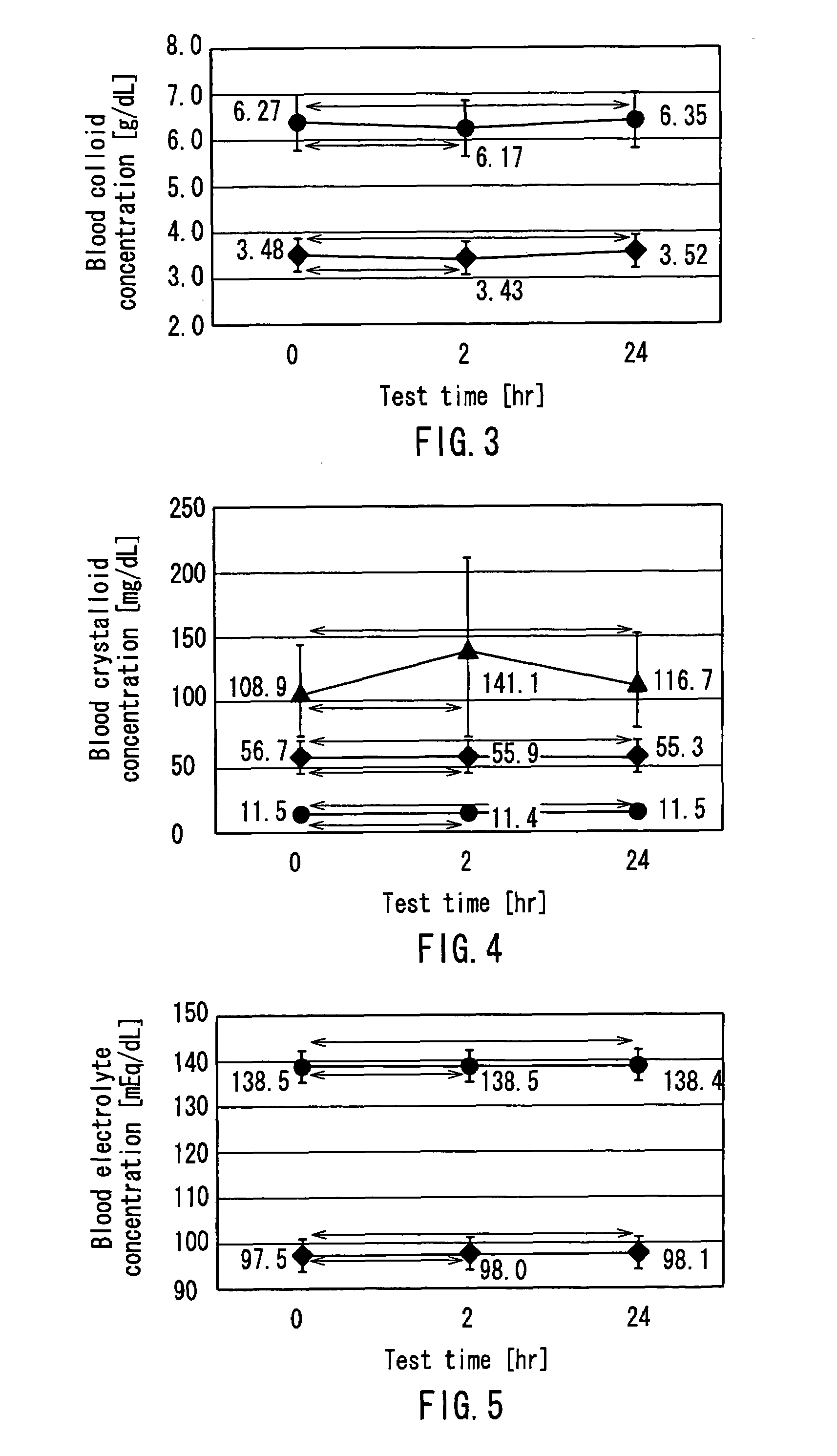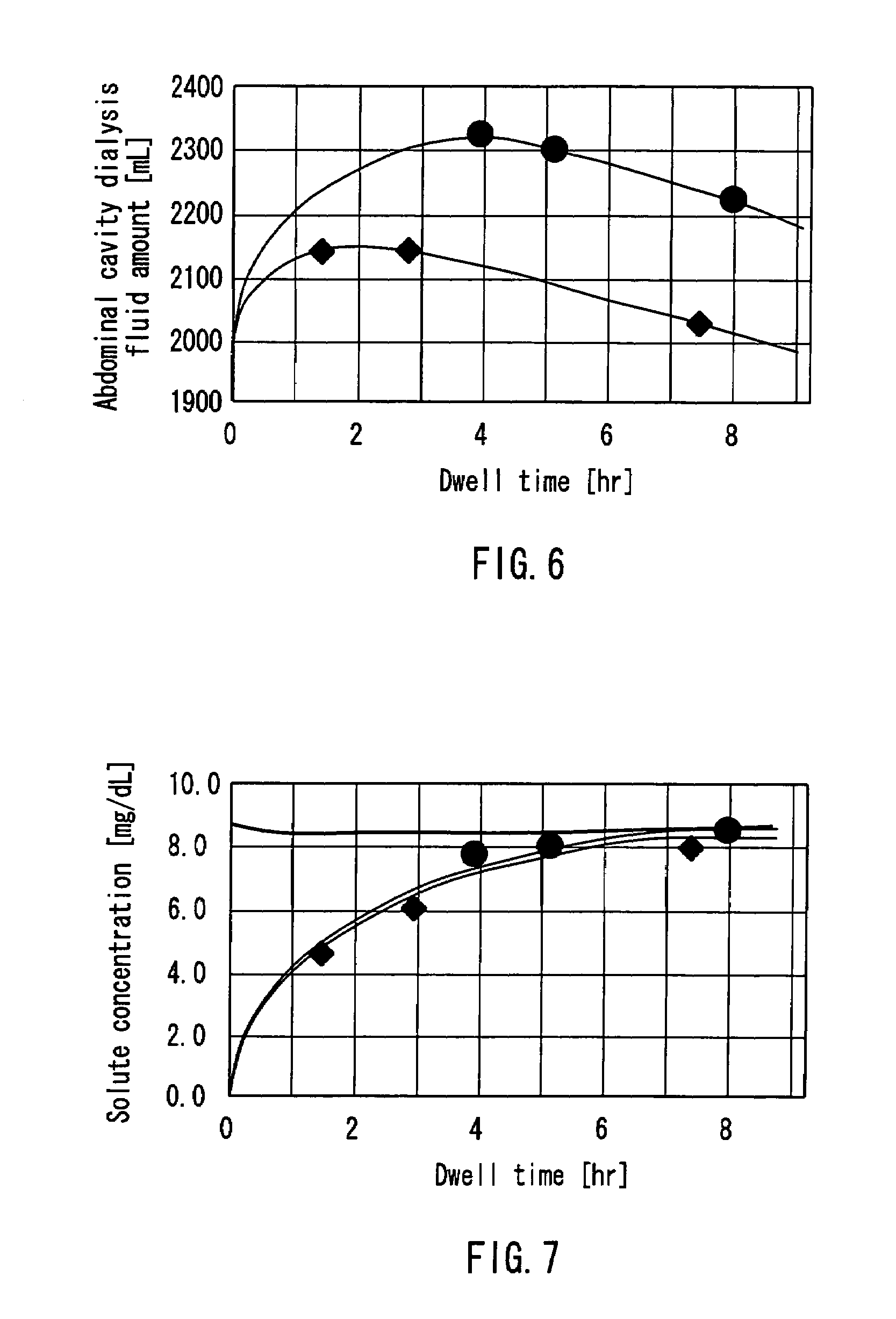Method for testing peritoneal function
a technology for peritoneal dialysis and function, applied in the field of peritoneal dialysis function and water removal function, can solve the problems of limited patient groups on whom qualitative evaluation methods may be adopted, no established testing method for appropriately evaluating peritoneal function, and only the experience of the physician to be used, so as to efficiently and accurately evaluate the current condition
- Summary
- Abstract
- Description
- Claims
- Application Information
AI Technical Summary
Benefits of technology
Problems solved by technology
Method used
Image
Examples
Embodiment Construction
[0023]The testing method of the present invention requires a blood test a single time only, allowing the economic and mental burden that the test imposes on patients and the sense of time constraint to be reduced. The method is based on the finding that there is very little change in the blood solute concentration of chronic peritoneal dialysis patients during the 24-hour test period. As a result, a simple testing method that uses test data from a blood sample taken at a representative time during a 24-hour period and that substantially does not affect the precision of analysis by computer simulation was achieved.
[0024]In this testing method, it is preferable that the peritoneal equilibrium test is performed last of all the steps, and the blood test is performed immediately before or immediately after the peritoneal equilibrium test, or is performed during the peritoneal equilibrium test. Thus, by taking a single blood sample during testing, preferably when testing has finished, alo...
PUM
 Login to View More
Login to View More Abstract
Description
Claims
Application Information
 Login to View More
Login to View More - R&D
- Intellectual Property
- Life Sciences
- Materials
- Tech Scout
- Unparalleled Data Quality
- Higher Quality Content
- 60% Fewer Hallucinations
Browse by: Latest US Patents, China's latest patents, Technical Efficacy Thesaurus, Application Domain, Technology Topic, Popular Technical Reports.
© 2025 PatSnap. All rights reserved.Legal|Privacy policy|Modern Slavery Act Transparency Statement|Sitemap|About US| Contact US: help@patsnap.com



